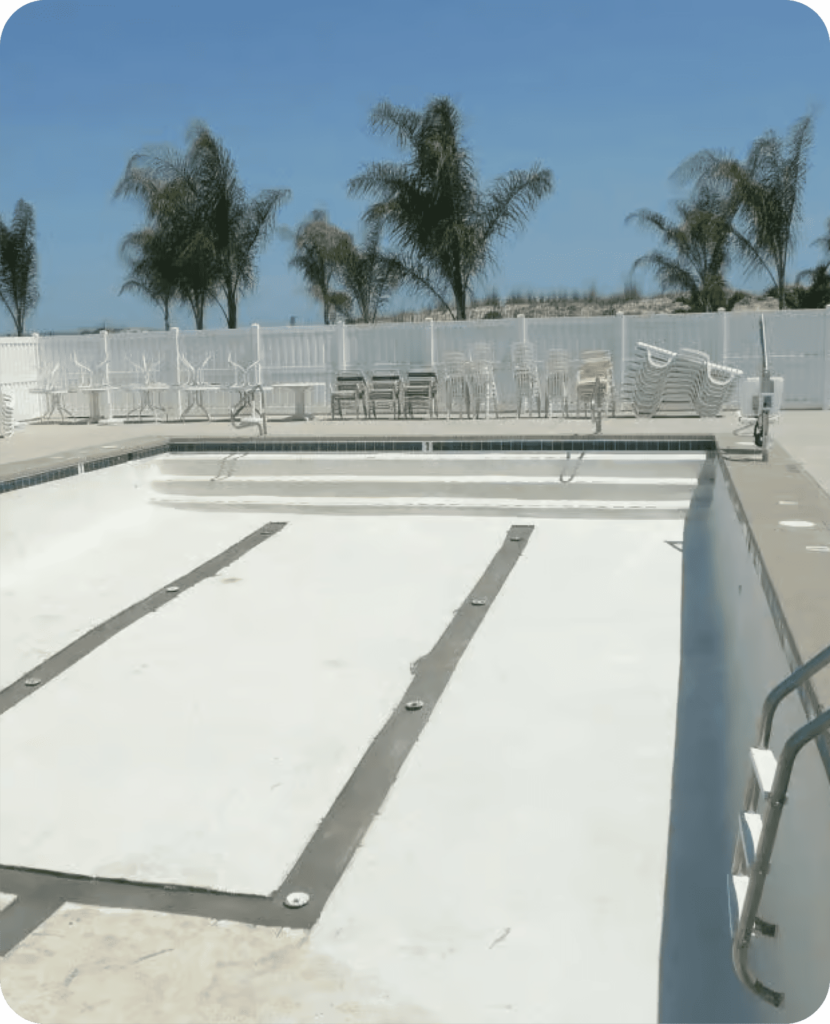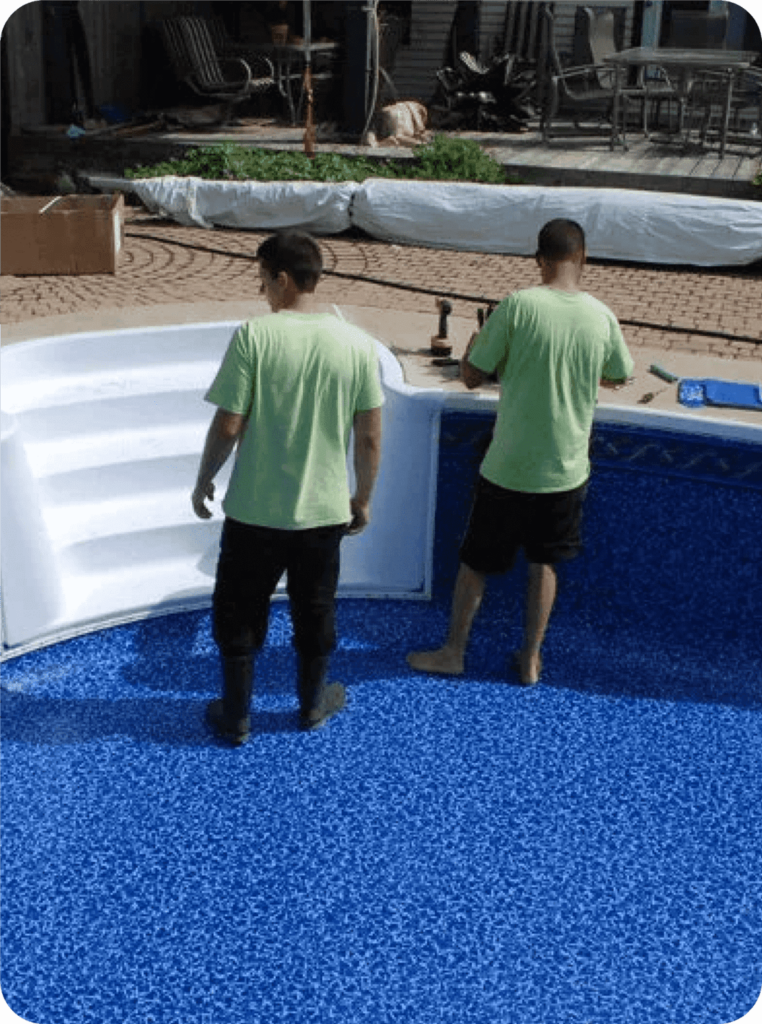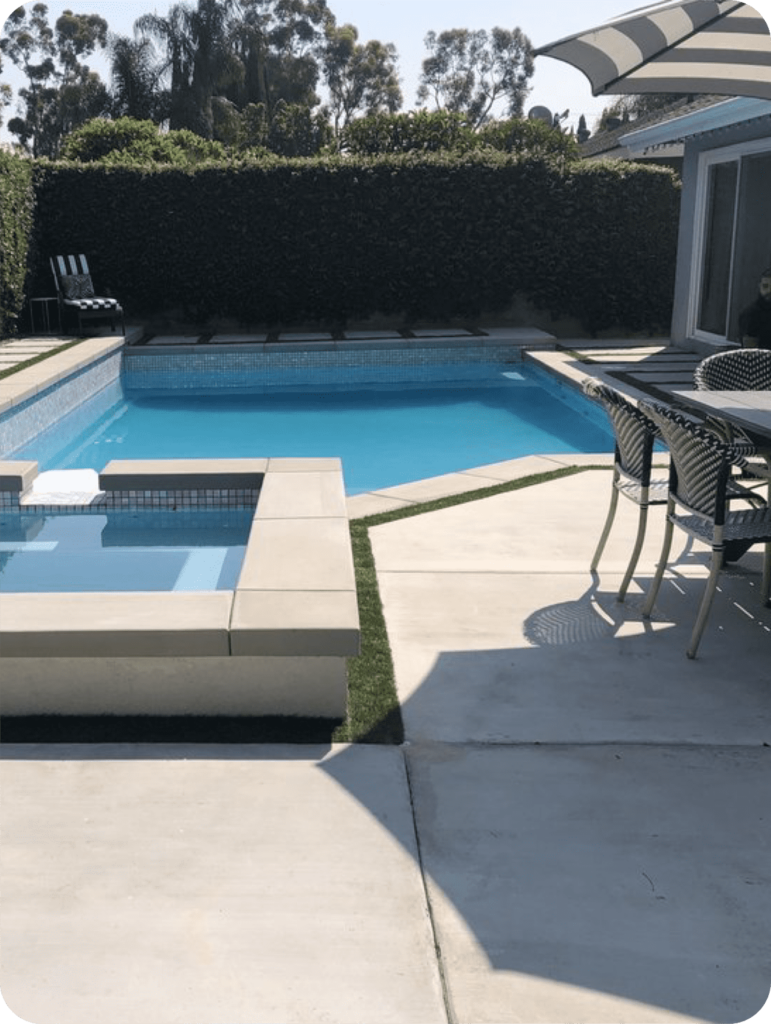When your swimming pool was first installed, you probably looked at it every so often just to appreciate its beauty.
However, over time, everything starts to degrade. There’s a good chance now when you look at your pool that you notice that it’s a bit worn and it looks a bit outdated. You may even see cracks or other issues.
That’s okay. It happens. Time takes its toll on everything. The good news is that you can bring life back to your swimming pool through pool resurfacing.
Pool resurfacing is the process of renewing the finish of a pool. With proper resurfacing, your pool will look just as
stunning as the day you first opened it. You’ll be able to look out into your backyard with pride again. You’ll once again feel confident making your swimming pool the focal point of your outdoor space, and it will regain its spot as the place where people gather to enjoy themselves.

In general, most swimming pools require resurfacing every five to 15 years, with about 10 years being the average. However, that depends on many factors, including the environment you live in, how often you use the pool, how well you’ve taken care of the pool, and the materials used. Each pool is unique, so even two pools of the same age located near one another may require resurfacing at different times.
Some of the signs that it might be time for pool resurfacing include:
If you notice any of these signs, it’s time to have professionals look at your pool.
Contact us today to learn more about how we can restore your pool to its former glory.
Pool resurfacing may be a time consuming process because it involves removing the top layer of the pool’s finish and replacing it, while making necessary repairs along the way.
Not only does this leave your pool looking brand new again, but it also lengthens its overall lifespan, so you’ll be able to enjoy it for many more years to come.
The resurfacing process differs depending on the type of pool you own. For instance, the steps involved with resurfacing a concrete pool will be different than the ones used for a vinyl pool.
The most common type of pool resurfacing occurs with concrete pools. These pools are popular because they look great, are very durable, and can be created in many customized styles. By taking proper care of your concrete pool and resurfacing it when required, you’ll have a long-lasting, beautiful backyard oasis that you’ll truly be proud of.


There are many pool finishes and many pool resurfacing options. One of the most common is plaster. This affordable option looks great and lasts many years. It gives your pool a smooth finish and can be painted in the color of your choice, giving your swimming pool its own unique look and feel.
Pebbles or crushed beads are another popular option. These finishes provide a more textured look and feel, and many people consider them more visually appealing.
Fiberglass is another smooth and durable choice. With this finish, a fiberglass shell is applied over the existing pool surface.
Tile is frequently used for water lines and accents, but may be used for the entire pool if you choose. Tile comes in a wide variety of different colors, styles, patterns and sizes. You may also choose from various materials such as ceramic, porcelain, or glass.
There are many benefits to swimming pool resurfacing. First, it drastically improves the look and feel of your pool. Once again, you will have a swimming pool you are proud of. You’ll want to spend more time in and around the pool once it has been repaired and refreshed.
However, there are several benefits to pool resurfacing beyond appearance. Keeping your pool in great condition extends its lifespan and reduces the risk of significant issues that may cause serious problems.
Plus, there’s the reality that swimming in a properly finished pool—one that is free of cracks, damage, and other imperfections—just feels better. You’ll enjoy your pool more and get the most out of your investment.


The cost of pool resurfacing depends on many factors, with the two most important being the size of your pool and the finishing material you choose. Typically, pool resurfacing is quoted based on the square footage of the pool. A larger pool will likely cost more to resurface.
Plaster and fiberglass tend to be two of the more affordable options, while pebbles may be slightly more costly. Tiled surfaces tend to come with a higher cost as well, but there are many factors involved, including the type of tiles, the style of the finish, and much more.
If you’re hoping to have your swimming pool resurfaced, we’re the right choice. With years of experience taking care of Southern California pools, Anderson Pool and Spa can refresh and renew your pool, keeping it looking and functioning perfectly for many more years. We’ll even give you a free quote before we start your pool makeover, so you’ll be able to fit it into your budget. Any other questions? We’re here to help. Contact us today.
Get a no obligation, hassle-free estimate on what a swimming pool remodel or new pool would cost for your home.
C-53 796500
Enter your email to subscribe to our news and updates by email.